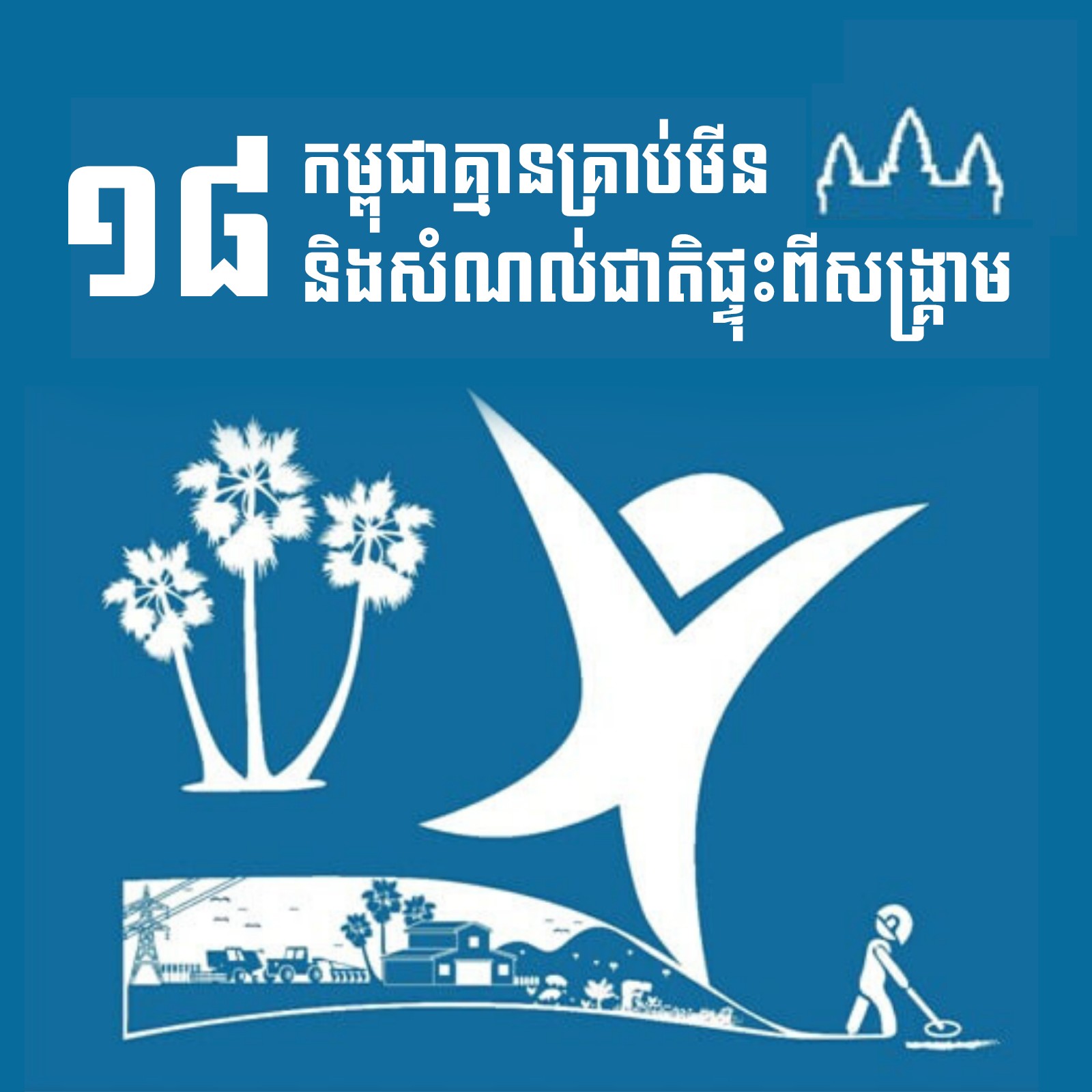នៅក្នុងខែកញ្ញា ឆ្នាំ ២០១៥ មហាសន្និបាតអង្គការសហប្រជាជាតិ បានអនុម័តនូវរបៀបវារៈឆ្នាំ ២០៣០ ថ្មី សម្រាប់ការអភិវឌ្ឍប្រកបដោយចីរភាព។ គោលដៅទាំងនេះមានចំនួន ១៧ ដែលត្រូវបានគេស្គាល់ថា គោលដៅអភិវឌ្ឍន៍ប្រកបដោយចីរភាពរបស់អង្គការសហប្រជាជាតិ ដោយមានគោលបំណងដើម្បីនាំទៅរកសកម្មភាពនៅក្នុងផ្នែកដ៏សំខាន់ៗ នាឆ្នាំ ២០៣០។ គោលដៅទាំងនេះត្រូវបានចែកចេញជា ១៦៩ ចំណុចដៅ និង ២៣០ សូចនាករ។1
របៀបវារៈនេះ ចងក្រងឡើងសម្រាប់ជំនួស គោលដៅអភិវឌ្ឍន៍សហស្សវត្សរ៍ ដែលមានគោលដៅចំនួន៨ ដែលត្រូវសម្រេចបាននៅឆ្នាំ២០១៥។ គោលដៅដែលបង្កើតថ្មីនេះ ត្រូវបានបង្កើតឡើងដើម្បីឆ្លើយតបនឹងការរិះគន់លើ គោលដៅអភិវឌ្ឍន៍សហស្សវត្សរ៍។ គោលដៅដែលមានពីមុនត្រូវបានរិះគន់ថា មានកង្វះខាតភាពម្ចាស់ការពីស្ថាប័នពាក់ព័ន្ធ ដែលពាក់ព័ន្ធភាគច្រើនលើការអភិវឌ្ឍពិភពលោក ជាជាងនៅតាមតំបន់ ព្រមទាំងមានទំនោរលើតម្រូវការរបស់ម្ចាស់ជំនួយ ជាជាងដំណើរការអភិវឌ្ឍមូលដ្ឋាន។2
ដំណើរផ្លាស់ប្តូរពីគោលដៅអភិវឌ្ឍន៍សហស្សវត្សរ៍ ទៅកាន់គោលដៅអភិវឌ្ឍន៍ប្រកបដោយចីរភាពនៅក្នុងប្រទេសកម្ពុជា
នៅក្នុងឆ្នាំ ២០០៣ គោលដៅអភិវឌ្ឍន៍សហស្សវត្សរ៍ ត្រូវបានផ្តោតជាថ្មីសម្រាប់ការកំណត់មូលដ្ឋាន នៅពេលដែលគោលដៅអភិវឌ្ឍន៍សហស្សវត្សរ៍កម្ពុជា ត្រូវបានអនុម័ត។ វាត្រូវបានធ្វើឡើងក្នុងគោលបំណងដើម្បីធ្វើឱ្យសមស្របទៅនឹងភាពជាក់ស្តែងនៅក្នុងតំបន់ កាន់តែមានប្រសិទ្ធិភាព និងដោយបានរួមបញ្ជូលនូវគោលដៅចំនួន ៩ ដើម្បីរៀបចំយុទ្ធភណ្ឌសល់ពីសង្គ្រាម។3 យ៉ាងណាមិញ អ្នកអង្កេតការជាច្រើនបានជឿជាក់ថា ការផ្តោតសំខាន់នៃគោលដៅទាំងនេះ នៅតែទាមទារទស្សនវិស័យសកលជាច្រើន ដែលរាំងស្ទះដល់ការអនុវត្តមូលដ្ឋាននៃរបៀបវារៈអភិវឌ្ឍន៍សហស្សវត្សរ៍។
ការស្វែងយល់ពីទំនាក់ទំនង នៃគោលដៅអភិវឌ្ឍន៍សហ្សវត្យរ៍នីមួយៗ ហើយនឹងតម្រូវការនៃចំណេះដឹង និងការយល់ឃើញដូចគ្នា នៅកម្រិតប្រទេសគឺជាកត្តាសំខាន់សម្រាប់ដោះស្រាយបញ្ហានេះ។4 ឧទាហរណ៍៖
- សូចនាករ ដែលផ្តោតលើការងារផ្លូវការ មិនបានរួមបញ្ចូលបរិមាណខ្ពស់នៃស្ត្រីដែលបានធ្វើការងារមិនផ្លូវការនោះទេ។5
- វឌ្ឍនភាពសេដ្ឋកិច្ច ដោយទាញយកធនធានធម្មជាតិ ដែលមានសារៈសំខាន់សម្រាប់សុវត្ថភាពអាហារ គឺផ្ទុយនឹងការអភិវឌ្ឍប្រកបដោយចីរភាព។6
- ប្រជាជនភាគច្រើននៅតំបន់ជនបទនៃប្រទេសកម្ពុជា មានកម្រិតជីវភាព លើបន្ទាត់ភាពក្រីក្រតែបន្តិចប៉ុណ្ណោះ ហើយពួកគេមានភាពងាយរងគ្រោះ នឹងសេដ្ឋកិច្ច និងការប្រែប្រួលអាកាសធាតុ ដែលអាចនឹងប៉ះពាល់ដល់ចំណុចដៅមួយចំនួន។7
របៀបវារៈការអភិវឌ្ឍប្រកបដោយនិរន្តរភាពឆ្នាំ ២០៣០ ត្រូវបានផ្សព្វផ្សាយ ខណៈដែលមានការចូលរួម និងសមភាពកាន់តែច្រើន។ ដូច្នេះហើយ កិច្ចការសម្របសម្រួលនៃការធ្វើផែនការ និងការអនុវត្តគោលដៅអភិវឌ្ឍន៍ប្រកបដោយចីរភាពជាមួយនឹងយុទ្ធសាស្ត្រអភិវឌ្ឍន៍នៅក្នុងមូលដ្ឋាននានា ដូចជា ផែនការយុទ្ធសាស្ត្រអភិវឌ្ឍន៍ជាតិ ២០១៤-២០១៨ ត្រូវបានកំណត់ជាអាទិភាព។

រាជធានីភ្នំពេញ ជាទីក្រុងស្ថិតនៅទីប្រសព្វនៃទន្លេសាប នឹងទន្លេមេគង្គ (ផ្នែកខាងឆ្វេង) មានប្រជាជនរស់នៅប្រមាណ ២ លាននាក់។ ទីក្រុងនេះបានក្លាយជារាជធានីនៃប្រទេសកម្ពុជាចាប់តាំងពីឆ្នាំ ១៤៣២។ រូបភាព ដោយ Ashley,ថតនៅថ្ងៃទី ២២ ខែមិថុនា ឆ្នាំ ២០១៥។ ក្រោមអាជ្ញាបណ្ណ CC BY-NC-ND 2.0.
ការធ្វើមូលដ្ឋានីយកម្មគោលដៅអភិវឌ្ឍន៍ប្រកបដោយចីរភាព
ការធ្វើមូលដ្ឋានីយកម្មនៃគោលដៅអភិវឌ្ឍន៍ប្រកបដោយចីរភាពបានចាប់ផ្តើមជាមួយនឹងសិក្ខាសាលាជាច្រើនលើកច្រើនសារដែលបានប្រារព្ធឡើងដោយក្រសួងផែនការ មុនពេលនៃការបំពេញរបៀបវារៈសហស្សវត្សរ៍រួចរាល់។ អ្នកចូលរួមនៅក្នុងកិច្ចប្រជុំទាំងនេះ រួមមានអ្នកតំណាងមកពីស្ថាប័នរដ្ឋាភិបាល និងដៃគូអភិវឌ្ឍន៍នានា រួមទាំងទីភ្នាក់ងារអង្គការសហប្រជាជាតិ ដែលជាអ្នកពិនិត្យលើចំណុចដៅ និងសូចនាករនៃគោលដៅអភិវឌ្ឍន៍ប្រកបដោយចីរភាពនីមួយៗ ក្នុងការបញ្ជ្រាបគោលដៅទាំងនោះនៅក្នុងប្រទេសកម្ពុជា ដើម្បីជូនដំណឹងពួកគេពីការងាររបស់ក្រុមការងារបច្ចេកទេស។8 ក្រុមទាំងនេះត្រូវអភិវឌ្ឍផែនការជាក់លាក់ជាច្រើនទៅតាមមុខងារផ្សេងៗ នៃរដ្ឋាភិបាលថ្នាក់ជាតិ និងថ្នាក់ក្រោមជាតិ។
ការពិចារណាពីទំហំនៃបញ្ហាគ្របដណ្តប់ដោយចំណុចដៅនានារបស់គោលដៅអភិវឌ្ឍន៍ប្រកបដោយចីរភាព វាគឺពិតជាមានសារៈសំខាន់ដើម្បីគិតគូរ ថាតើរបៀបវារៈការអភិវឌ្ឍប្រកបដោយចីរភាពឆ្នាំ ២០៣០នឹងឆ្លើយតបទៅនឹងការរិះគន់នានារបស់របៀបវារៈសហ្សវត្យរ៍បានយ៉ាងដូចម្តេច។ រាជរដ្ឋាភិបាលកម្ពុជា នឹងមិនធ្វើការគ្រោងយុទ្ធសាស្ត្រថ្មីៗ ដើម្បីសម្រេចឱ្យបាននូវគោលដៅអភិវឌ្ឍន៍ប្រកបដោយចីរភាពនោះទេ រហូតទាល់តែផែនការយុទ្ធសាស្ត្រអភិវឌ្ឍន៍ជាតិ ឆ្នាំ ២០១៩-២០២៣ ត្រូវបានបង្កើត។ ដូច្នេះហើយ ការសិក្សាពីការតម្រែតម្រង់នៃគោលដៅអភិវឌ្ឍន៍ប្រកបដោយចីរភាពជាមួយនឹងផែនការ និងគោលនយោបាយអភិវឌ្ឍន៍ជាតិបច្ចុប្បន្ន ដូចជា ផែនការយុទ្ធសាស្ត្រអភិវឌ្ឍន៍ជាតិ (២០១៤-២០១៨) ជាដើម ត្រូវបានប្រើប្រាស់ដើម្បីកំណត់នូវភាពខ្វះចន្លោះនានា ដែលផែនការ និងគោលនយោបាយទាំងនេះមិនបានសង្គតិភាពទៅនឹងចំណុចដៅនៃគោលដៅអភិវឌ្ឍន៍ប្រកបដោយចីរភាព។9
ចំណុចដៅទាំង ១៦៩ នៅក្នុងប្រទេសកម្ពុជា៖
- ចំណុចដៅចំនួន ៤៣ នៃគោលដៅអភិវឌ្ឍន៍ប្រកបដោយចីរភាពចំនួន ១៦ ដំបូងត្រូវបានបង្កើតឡើងដើម្បីអាចជាមធ្យោបាយនៃការអនុវត្ត។ ចំណុចដៅទាំងនេះសំដៅរកការផ្តល់ហិរញ្ញប្បទាននៃគោលដៅអនាគត និងមិនអាចត្រូវបានប្រើប្រាស់ក្រៅពីគោលនយោបាយដែលមាននោះទេ។
- គោលដៅចំនួន៤ ទៀតត្រូវបានចាត់ទុកថាមិនអាចអនុវត្តន៍បាន សម្រាប់ប្រទេសកម្ពុជា ព្រោះថាគោលដៅទាំងនេះសំដៅលើយន្តការផ្តល់ហិរញ្ញប្បទានជាអន្តរជាតិពីបណ្តាប្រទេសអភិវឌ្ឍន៍ ទៅដល់បណ្តាប្រទេសអភិវឌ្ឍន៍តិចតួច។
- ចំនែកចំណុចដៅ ១៣ ទៀតនៃ “គោលដៅអភិវឌ្ឍន៍ប្រកបដោយចីរភាពទី ១៧ - ភាពជាដៃគូ ដើម្បីសម្រេចគោលដៅ” ទាមទារព័ត៌មានច្រើនអំពីគោលនយោបាយ និងស្ថាប័នខាងក្រៅ។
ចំណុចដៅទាំង ១៦៩ នៅក្នុងប្រទេសកម្ពុជា៖
- ចំណុចដៅចំនួន ៤៣ នៃគោលដៅអភិវឌ្ឍន៍ប្រកបដោយចីរភាពចំនួន ១៦ ដំបូងត្រូវបានបង្កើតឡើងដើម្បីអាចជាមធ្យោបាយនៃការអនុវត្ត។ ចំណុចដៅទាំងនេះសំដៅរកការផ្តល់ហិរញ្ញប្បទាននៃគោលដៅអនាគត និងមិនអាចត្រូវបានប្រើប្រាស់ក្រៅពីគោលនយោបាយដែលមាននោះទេ។
- គោលដៅចំនួន៤ ទៀតត្រូវបានចាត់ទុកថាមិនអាចអនុវត្តន៍បាន សម្រាប់ប្រទេសកម្ពុជា ព្រោះថាគោលដៅទាំងនេះសំដៅលើយន្តការផ្តល់ហិរញ្ញប្បទានជាអន្តរជាតិពីបណ្តាប្រទេសអភិវឌ្ឍន៍ ទៅដល់បណ្តាប្រទេសអភិវឌ្ឍន៍តិចតួច។
- ចំនែកចំណុចដៅ ១៣ ទៀតនៃ “គោលដៅអភិវឌ្ឍន៍ប្រកបដោយចីរភាពទី ១៧ - ភាពជាដៃគូ ដើម្បីសម្រេចគោលដៅ” ទាមទារព័ត៌មានច្រើនអំពីគោលនយោបាយ និងស្ថាប័នខាងក្រៅ។
ចំណុចដៅដែលនៅសល់ចំនួន ១០៩ទៀតនៃគោលដៅអភិវឌ្ឍន៍ប្រកបដោយចីរភាព៖
- រហូតទៅដល់ ៨៥នៃចំណុចដៅ (៧៨%) ត្រូវបានលើកឡើងនៅក្នុងដំណើរការធ្វើផែនការយុទ្ធសាស្ត្រ និងគោលនយោបាយជាតិ។
- ចំណុចដៅចំនួន ១៧ កំពុងត្រូវបានលើកឡើងដោយផ្នែកៗតែប៉ុណ្ណោះ។
- ចំណុចដៅចំនួន ៧ ទៀតមិនត្រូវបានលើកឡើងនោះទេ។
ភាពខ្វះចន្លោះដែលកំពុងមាននៅក្នុងគោលនយោបាយបណ្តាលមកពីហេតុផលមួយចំនួន រួមមាន៖
- ចំណុចដៅរបស់រដ្ឋាភិបាលដែលមានស្រាប់ មិនទាន់មានមហិច្ឆតាគ្រប់គ្រាន់នៅឡើយ។
- មិនមានសកម្មភាពគោលនយោបាយគ្រប់គ្រាន់ ដើម្បីពន្យល់ពីរបៀបដើម្បីសម្រេចបាននូវគោលនយោបាយទាំងនោះ។
- មិនមានការលើកឡើងនូវតម្រូវការនានានៃក្រុមជនងាយរងគ្រោះ មានដូចជា ស្ត្រី កុមារ ពលរដ្ឋរស់នៅជាមួយនឹងពិការភាព ឬក្រុមជនជាតិដើមភាគតិច ដែលមាននៅក្នុងកិច្ចប្រជុំនៃគោលដៅអភិវឌ្ឍន៍ប្រកបដោយចីរភាពនោះទេ។
បញ្ហាចម្បងនានានៃកង្វះខាតការយកចិត្តទុកដាក់រួមមាន វិសមភាពយេនឌ័រ ការបែងចែកដោយសមធម៌នូវរាល់ផលប្រយោជន៍បានមកពីធនធានធម្មជាតិទៅដល់ក្រុមជនងាយរងគ្រោះ ការប្រឈមនានានៃប្រជាជនរស់នៅទីក្រុង និងការដាក់បញ្ចូលនូវក្រុមងាយរងគ្រោះនានានៅក្នុងដំណើរការសម្រេចចិត្ត។
កង្វះចន្លោះនៃការធ្វើផែនការ និងគោលនយោបាយទាំងនេះរួមមាន បញ្ហាអន្តរវិស័យ ឬឆ្លងកាត់វិស័យជាច្រើន។ នេះមានន័យថា ខណៈដែលគោលដៅអភិវឌ្ឍន៍ប្រកបដោយចីរភាព មានការផ្គូរផ្គងកាន់តែច្រើនជាមួយផែនការ និងគោលនយោបាយរបស់រដ្ឋាភិបាលជាងគោលដៅអភិវឌ្ឍន៍សហស្សវត្សរ៍ដែលធានាថា ផែនការទាំងនេះត្រូវបានអនុវត្តរួមគ្នា ជាពិសេសនៅថ្នាក់ក្រោមជាតិនឹងជាបញ្ហាប្រឈមដ៏សំខាន់មួយ។
កង្វះចន្លោះនៃការធ្វើផែនការ និងគោលនយោបាយទាំងនេះ បានក្លាយជាចំណុចផ្តោតសំខាន់សម្រាប់ការបង្កើតចំណុចដៅនានានៃគោលដៅអភិវឌ្ឍន៍ប្រកបដោយចីរភាព ក្នុងគោលបំណងឆ្លើយតបទៅនឹងចំណុចខ្វះខាតដែលមិនទាន់បានបំពេញខណៈពេលកំពុងអនុវត្តគោលដៅអភិវឌ្ឍសហ្សវត្យរ៍។
មធ្យោបាយនៃការអនុវត្តគឺជាចំណុចផ្តោតសំខាន់សម្រាប់ការអភិវឌ្ឍចំណុចដៅរបស់ គោលដៅអភិវឌ្ឍន៍ប្រកបដោយចីរភាព ជាការឆ្លើយតបទៅនឹងភាពខ្វះខាតដែលបានរកឃើញនៅពេលអនុវត្តគោលដៅអភិវឌ្ឍន៍សហស្សវត្សរ៍។
ធនធាននានាដែលត្រូវការមានរួមទាំងការផ្តល់ហិរញ្ញប្បទាន និងមិនមែនហិរញ្ញប្បទាន រួមទាំងអភិបាលកិច្ចជាតិ និងសកល។10 ប្រទេសកម្ពុជានឹងត្រូវការប្រើប្រាស់ប្រភេទធនធានទាំងនេះនៅគ្រប់កម្រិតនីមួយៗ ដើម្បីសម្រេចឱ្យបាននូវគោលដៅទាំងនោះ។
មធ្យោបាយនៃការអនុវត្តជាសកល
នៅឆ្នាំ២០១៧ កម្ពុជាទទួលបានថវិកាចំនួន ១,៣៥ លាន សម្រាប់ជំនួយអភិវឌ្ឍន៍ផ្លូវការ (ODA) ដែលច្រើនជាងឆ្នាំ២០១៦។ យ៉ាងណាក៏ដោយ ជំនួយអភិវឌ្ឍន៍ផ្លូវការ (ODA) ត្រូវបានសន្និដ្ឋានថានឹងធ្លាក់ចុះ ពីឆ្នាំ២០១៤ ទៅឆ្នាំ២០១៨ ដោយមានកំណើនផ្នែកកម្ចី និងការធ្លាក់ចុះជំនួយ។11 កម្ពុជា បានក្លាយទៅជាប្រទេសមានចំណូលមធ្យមកម្រិតទាប នៅឆ្នាំ២០១៦ ហើយអាចនឹងចាកផុតពីប្រទេសអភិវឌ្ឍន៍តិចតួច ក្នុងរយៈពេលតែ១ទស្សវត្សរ៍។ ស្ថានភាពជំនួយសម្រាប់ប្រទេសកំពុងអភិវឌ្ឍន៍ តាមរយៈធនាគារពហុភាគី និងទំនាក់ទំនងពាណិជ្ជកម្មដែលមានភាពអនុគ្រោះ គឺមានឥទ្ធិពលយ៉ាងខ្លាំងចំពោះការអភិវឌ្ឍប្រទេសកម្ពុជា។ ឥទ្ធិពលទាំងនេះភាគច្រើនគឺពីប្រទេសចិន ដែលក្លាយជាប្រភពជំនួយអភិវឌ្ឍន៍ផ្លូវការ (ODA) ចំបង។12
ស្ថាប័នដែលផ្តល់ការវិនិយោគផ្ទាល់ពីបរទេស (អេហ្វ ឌី អាយ) កាន់តែដើរតួរសំខាន់ជាងមុន។ វាកើតឡើងតាមរយៈយន្តការដូចជា មូលនិធិបៃតងសម្រាប់បម្រែបម្រួលអាកាសធាតុ ដឹកនាំដោយអនុសញ្ញាក្របខ័ណ្ឌសហប្រជាជាតិស្តីពីការប្រែប្រួលអាកាសធាតុ (UNFCCC) ព្រមទាំងធនាគារវិនិយោគហេដ្ឋារចនាសម្ព័ន្ធអាស៊ី ដឹកនាំដោយប្រទេសចិន (AIIB)។ យន្តការហិរញ្ញវត្ថុនេះ ត្រូវបានបង្កើតឡើងដើម្បីអាចឱ្យការវិនិយោគវិស័យឯកជន អាចធ្វើជាដៃគូជាមួយរដ្ឋ ក្នុងការអភិវឌ្ឍហេដ្ឋារចនាសម្ព័ន្ធ និងកិច្ចផ្តួចផ្តើមនិរន្តរភាព។13
ការលេចឡើងនៃធនាគារវិនិយោគហេដ្ឋារចនាសម្ព័ន្ធអាស៊ី ដឹកនាំដោយប្រទេសចិន (AIIB) មានសក្តានុពលក្នុងការផ្លាស់ប្តូរយ៉ាងខ្លាំងពីរបៀប ដែលប្រទេសកម្ពុជាកំពុងខិតខំប្រឹងប្រែងបំពេញតាមចំណុចដៅរបស់គោលដៅអភិវឌ្ឍន៍ប្រកបដោយចីរភាព។ គោលបំណងរបស់ធនាគារវិនិយោគហេដ្ឋារចនាសម្ព័ន្ធអាស៊ី (AIIB) គឺធ្វើការបំពេញ មិនមែនជាការប្រកួតប្រជែងជាមួយនឹងស្ថាប័នហិរញ្ញវត្ថុពហុភាគី។ យ៉ាងណាក៏ដោយរបៀបវារៈ របស់ធនាគារវិនិយោគហេដ្ឋារចនាសម្ព័ន្ធអាស៊ី (AIIB) ផ្តោតលើពាណិជ្ជកម្មនៃកិច្ចសហប្រតិបត្តិការសេដ្ឋកិច្ចលើហេដ្ឋារចនាសម្ព័ន្ធជាជាងវិធីសាស្ត្រដែលដឹកនាំដោយម្ចាស់ជំនួយដែលមានលក្ខខណ្ឌដែលត្រូវបំពេញ។ ការផ្តោតការយកចិត្តទុកដាក់នេះ គឺផ្អែកលើគោលការណ៍ចំនួនប្រាំដែលបានបញ្ជាក់នៅក្នុងសៀវភៅសឆ្នាំ ២០១៤ ស្តីពីជំនួយបរទេសរបស់ចិន។ គោលការណ៍ខ្លះមានភាពចម្រូងចម្រាស ដែលរួមមាន មិនជ្រៀតជ្រែកកិច្ចការអធិបតេយ្យភាព មិនមានលក្ខខណ្ឌភ្ជាប់ជាមួយ ជាពិសេសទាក់ទងនឹងអភិបាលកិច្ច និងការប្តេជ្ញាចិត្តចំពោះគោលនយោបាយ “ចិនតែមួយ” ដោយគោរពទំនាក់ទំនងជាមួយប្រទេសតៃវ៉ាន់។14
មធ្យោបាយនៃការអនុវត្តកម្រិតថ្នាក់ជាតិ
ខណៈដែលជាប្រទេសដែលមានទំហំតូច មធ្យោបាយនៃការអនុវត្តគោលដៅអភិវឌ្ឍន៍ប្រកបដោយចីរភាពកម្រិតថ្នាក់ជាតិរបស់ប្រទេសកម្ពុជា ត្រូវបានពឹងផ្អែកស្របទៅនឹងកំណើននាពេលថ្មីៗនេះរបស់ប្រទេសនេះ។ ប្រទេសកម្ពុជាបាននិងកំពុងបង្កើនមូលនិធិផ្ទាល់ខ្លួនសម្រាប់ការអភិវឌ្ឍ តាមរយៈចំណូលដែលបានមកពីពន្ធ និងចំណូលមិនមែនពន្ធរបស់រដ្ឋាភិបាល។ ឧទារហណ៍ ចំណូលរដ្ឋាភិបាលជាសរុបនៅក្នុងឆ្នាំ ២០១៦ មានចំនួន ៣.៥ ពាន់លានដុល្លារអាមេរិក ឬ ១៨ភាគរយនៃផលិតផលក្នុងស្រុកសរុប។15 ចំណូលបានមកពីការប្រមូលពន្ធជាភាគរយធៀបនឹងផលិតផលក្នុងស្រុកសរុប បានកើនឡើងពី ១០ ភាគរយ មក ១៥ ភាគរយ នៅក្នុងរយៈពេល៥ឆ្នាំ គិតត្រឹមឆ្នាំ ២០១៦នេះ។16 ភាពល្អប្រសើរទាំងនេះត្រូវបាននាំមកដោយយុទ្ធសាស្ត្រគៀងគរធនធានឆ្នាំ ២០១៤-២០១៨ របស់រដ្ឋាភិបាល។ គោលបំណងនៃយុទ្ធសាស្ត្រនេះ គឺដើម្បីធ្វើឱ្យរដ្ឋបាលផ្នែកពន្ធដារបានប្រសើរឡើង តាមរយៈការកែលម្អតាមការអនុលោមនៃច្បាប់ ជាមួយនឹងបទបញ្ញត្តិដែលមានស្រាប់ ដោយគ្មានការពង្រឹកបន្ថែមនូវទំហំនៃការប្រមូលពន្ធ ឬអត្រានៃពន្ធនោះឡើយ។17
ភាពជាដៃគូនៃវិស័យសារធារណៈ និងឯកជន ក៏ជាយុទ្ធសាស្ត្រផ្សេងមួយទៀត ដែលនឹងត្រូវបានប្រើប្រាស់ប្រហាក់ប្រហែលគ្នា ដោយប្រទេសកម្ពុជា ដើម្បីឈានដល់ការប្រើប្រាស់ធនធានសម្រាប់តម្រូវការហេដ្ឋារចនាសម្ព័ន្ធនានា។ ការប៉ាន់ប្រមាណតាមបែបអភិរក្សនិយមមួយបានលើកឡើងថា ការវិនិយោគលើហេដ្ឋារចនាសម្ព័ន្ធទំហំ ១២ ទៅ ១៦ លានដុល្លារដុល្លារអាមេរិក នឹងត្រូវបានស្នើសុំដើម្បីឆ្លើយតបទៅនឹងតម្រូវការនៃដំណើរការនគរូបនីយកម្ម និងឧស្សាហូបនីយកម្មនៅក្នុងរយៈពេល ២០១៣-២០២២។18
រាជរដ្ឋាភិបាលកម្ពុជាបានអនុម័តលើគោលនយោបាយស្តីពី ភាពជាដៃគូនៃវិស័យឯកជន និងសាធារណៈ ដើម្បីសម្រួលដល់បរិយាកាសពាណិជ្ជកម្មដែលបានកែលម្អ ដល់ភាពជាដៃគូនេះ ធ្វើការអភិវឌ្ឍ និងដោះស្រាយនូវបញ្ហាដែលកំពុងបន្តទាំងឡាយរួមមាន អំពើពុករលួយ ភាពមិនច្បាស់លាស់នៃបទបញ្ញត្តិ អស្ថេរភាពនយោបាយ កង្វះខាតនៃការទទួលបានថាមពលអគ្គិសនីគ្រប់គ្រាន់ និងតម្លៃសមរម្យ រួមទាំងបញ្ហាផ្សេងៗ ដែលជាឧបសគ្គដល់ការវិនិយោគនៃសហគ្រាសគ្រប់គ្រងដោយរដ្ឋ។19 រដ្ឋាភិបាល កំពុងរៀបចំសៀវភៅណែនាំអំពីលទ្ធកម្មរបស់ភាពជាដៃគូរវាងវិស័យឯកជន និងសារធារណៈ ដែលពេលនេះសៀវភៅនេះនៅជាឯកសារព្រាងនៅឡើយ។20 សៀវភៅណែនាំនេះនឹងផ្តល់ព័ត៌មានអំពីយន្តការនានាដែលវិស័យឯកជនអាចប្រើប្រាស់ដើម្បីជម្រុញការផ្តល់សេវាហេដ្ឋាសម្ព័ន្ធ ជាយុទ្ធសាស្ត្រមួយសម្រាប់ជាការឆ្លើយតបប្រសើរទៅកាន់គោលដៅអភិវឌ្ឍន៍ប្រកបដោយចីរភាព។
ការត្រួតពិនិត្យគោលដៅអភិវឌ្ឍន៍ប្រកបដោយចីរភាពនៅកម្ពុជា
ក្រុមការងារបច្ចេកទេស គឺជាគន្លឹះក្នុងការគាំទ្រដល់រដ្ឋាភិបាល ដើម្បីធ្វើការសម្រចចិត្តអំពីវិធីក្នងការបន្តបញ្ចូល គោលដៅអភិវឌ្ឍន៍ប្រកបដោយចីរភាពទៅក្នុងដំណើរការ និងយុទ្ធសាស្ដ្រផែនការនៅថ្នាក់ជាតិ និងថ្នាក់ក្រោមជាតិ។ ខណៈដែលគោលដៅអភិវឌ្ឍន៍ប្រកបដោយចីរភាព បានផ្តោតការយកចិត្តទុកដាក់បន្ថែមលើមធ្យោបាយនៃការអនុវត្តគោលដៅទាំងនេះ មិនមែនរាល់គោលដៅអភិវឌ្ឍន៍ប្រកបដោយចីរភាពទាំងអស់ នឹងអាចត្រូវបានអនុវត្តន៍ស្មើៗគ្នាក្នុងពេលតែមួយនោះទេ។21 ការតាមដានវឌ្ឍនភាពឆ្ពោះទៅរកការសម្រេចបាននូវគោលដៅអភិវឌ្ឍន៍ប្រកបដោយចីរភាពកម្ពុជា គឺតម្រូវឱ្យមានការយល់ដឹងអំពីមូលហេតុនៃការមិនមានវឌ្ឍនភាពដែលមានភាពរាំងស្ទះ និងការផ្សារភ្ជាប់សក្តានុពល និងការផ្លាស់ប្តូរដែលអាចធ្វើឱ្យឆ្លងផុតនូវដែនកំណត់ទាំងនេះ។22
វិទ្យាស្ថានជាតិស្ថិតិ (NIS) នឹងរួមចំណែកក្នុងការធ្វើឱ្យប្រសើរឡើងនូវសមត្ថភាពសម្រាប់ការត្រួតពិនិត្យដែលមានការចូលរួម និងរួមបញ្ចូលគ្នានៃគោលដៅអភិវឌ្ឍន៍ប្រកបដោយចីរភាព នៅក្នុង ២៨ ក្រសួងពាក់ព័ន្ធផ្សេងៗគ្នា និងស្ថាប័នផ្សេងៗ ជាពិសេសនៅថ្នាក់ក្រោមជាតិដែលទិន្នន័យត្រូវបានប្រមូល។ ការសម្របសម្រួលនៃការត្រួតពិនិត្យ និងវាយតម្លៃទិន្នន័យនេះ គឺផ្អែកលើមុខងាររបស់ក្រុមការងារបច្ចេកទេស ១៩ក្រុមខុសៗគ្នា ដើម្បីសម្របសម្រួលដំណើរការរៀបចំផែនការ និងគោលនយោបាយក្នុងការឆ្លើយតប។ វាមានសារៈសំខាន់សម្រាប់ការធ្វើឱ្យដំណើរការផែនការនៅថ្នាក់តំបន់មានភាពស្របគ្នាជាមួយអាទិភាពនៃការអភិវឌ្ឍថ្នាក់ជាតិ ដែលទទួលឥទ្ធិពលពីរបៀបវារៈនៃការអភិវឌ្ឍប្រកបដោយចីរភាពក្នុងឆ្នាំ ២០៣០។23
ទំនាក់ទំនងប្រកបដោយប្រសិទ្ធភាពនៃទិន្នន័យត្រួតពិនិត្យដែលមានគុណភាពខ្ពស់ក្នុងទម្រង់ដែលអាចចូលទៅបានដល់ភាគីពាក់ព័ន្ធជាច្រើនគឺមានសារៈសំខាន់។ ដោយសារតែការពឹងផ្អែកទៅវិញទៅមករវាងគោលដៅអភិវឌ្ឍន៍ប្រកបដោយចីរភាពទាំង១៧ វានឹងមានសារៈសំខាន់ដើម្បីរក្សាការឃ្លាំមើលជាក់លាក់នៃគោលដៅនីមួយៗ។ វាក៏សំខាន់ផងដែរ ដែលព័ត៌មាននេះមានភាពងាយស្រួលយល់សម្រាប់ប្រជាជនកម្ពុជា ហើយត្រូវបានគេប្រើដើម្បីកែលម្អគណនេយ្យភាពរបស់ក្រសួងរដ្ឋ។24
ឯកសារយោង
- 1. អង្គការសហប្រជាជាតិ ឆ្នាំ ២០១៥។ “ផ្លាស់ប្តូរពិភពលោករបស់យើង៖ របៀបវារៈ ២០៣០ សម្រាប់ការអភិវឌ្ឍប្រកបដោយចីរភាព“។ ចូលអានខែមីនា ឆ្នាំ២០១៨។
- 2. ក្រុមការងារប្រព័ន្ធរបស់អង្គការសហប្រជាជាតិ ឆ្នាំ ២០១៣។ “របាយការណ៍រំលឹកពីការចូលរួមនៃរបៀបវារៈនៃគោលដៅអភិវឌ្ឍន៍សហស្សវត្សរ៍ ដើម្បីជម្រុញការអភិវឌ្ឍ៖ បទពិសោធន៍ក្រោយពីការចងក្រងរបៀបវារៈ អង្គការសហប្រជាជាតិឆ្នាំ២០១៥”។ ចូលអានខែមីនា ឆ្នាំ ២០១៨។
- 3. រាជរដ្ឋាភិបាលកម្ពុជា ឆ្នាំ២០១៤។ “របាយការណ៍វឌ្ឍនភាពប្រចាំឆ្នាំ ២០១៣៖ ការសម្រេចគោលដៅអភិវឌ្ឍន៍សហស្សវត្សរ៍កម្ពុជា”។ ចូលអានថ្ងៃខែមីនា ឆ្នាំ២០១៨។
- 4. អ៊ូ សីុវហួច និង ឈាត ស៊្រាង ឆ្នាំ ២០១៥។ “ការវិភាគអំពី ការត្រៀមខ្លួនរបស់កម្ពុជាសម្រាប់អនុវត្តគោលដៅអភិវឌ្ឍន៍ប្រកបដោយចីរភាព បញ្ហាប្រឈម ឱកាស និងហិរញ្ញប្បទាន”។ ចូលអានខែមីនា ឆ្នាំ២០១៨។
- 5. កម្មវិធីអភិវឌ្ឍន៍សហប្រជាជាតិ ឆ្នាំ ២០១៣។ “កម្ពុជា៖ របាយការណ៍ក្របខ័ណ្ឌបង្កើនល្បឿនគោលដៅអភិវឌ្ឍន៍សហស្សវត្សរ៍ – លើកកម្ពស់ការផ្តល់សិទ្ធិអំណាចដល់ស្រ្តី”។ ចូលអាន ខែមីនា ឆ្នាំ២០១៨។
- 6. Navarro, N. ឆ្នាំ២០១៦។ “ដល់ពេលដែលត្រូវឆ្ពោះទៅកាន់និរន្តរភាពបរិស្ថាន”។ ចូលអានខែមីនា ឆ្នាំ២០១៨។
- 7. Navarro, N. ឆ្នាំ ២០១៦។ “ការកសាងមូលដ្ឋានគ្រឹះសម្រាប់កំណើនសេដ្ឋកិច្ចប្រកបដោយចីរភាព និងបរិយាប័ន្ននៅក្នុងប្រទេសកម្ពុជា”។ ចូលអាន ខែមីនា ឆ្នាំ២០១៨។
- 8. យូអេនអេហ្វភីអេ-កម្ពុជា ឆ្នាំ ២០១៦។ “យូអេនអេហ្វភីអេ-មូលនិធិសហប្រជាជាតិសម្រាប់ប្រជាជនបង្កើនការធ្វើមូលដ្ឋានីយកម្មនៃគោលដៅអភិវឌ្ឍន៍ប្រកបដោយចីរភាពនៅក្នុងប្រទេសកម្ពុជា“។ ចូលអានខែមីនា ឆ្នាំ២០១៨។
- 9. យូអឹនឌីភី ឆ្នាំ២០១៦។ “ការវាយតម្លៃរួមបញ្ចូលគ្នាឆាប់រហ័ស - គោលដៅអភិវឌ្ឍន៍ប្រកបដោយចីរភាពនៅកម្ពុជា“។ ចូលអានខែមីនា ឆ្នាំ២០១៨។
- 10. Bhattacharya, D. and M. Ashfar Ali ឆ្នាំ ២០១៤។ “គោលដៅអភិវឌ្ឍន៍ប្រកបដោយចីរភាព-តើអ្វីទៅជា “មធ្យោបាយអនុវត្តន៍”“។ ចូលអានខែមីនា ឆ្នាំ២០១៨។
- 11. រាជរដ្ឋាភិបាលកម្ពុជា ឆ្នាំ ២០១៨។ “របាយការណ៍ស្តីពីប្រសិទ្ធិភាពកិច្ចសហប្រតិបត្តិការអភិវឌ្ឍន៍ និងភាពជាដៃគូនៅកម្ពុជា“។ ចូលអានខែមីនា ឆ្នាំ២០១៨។
- 12. ដូចឯកសារយោងខាងលើ។
- 13. Renwick, N. ឆ្នាំ ២០១៦។ “ប្រទេសចិនជាតួអង្គអភិវឌ្ឍន៍នៅអាស៊ីអាគ្នេយ៍“។ ចូលអានខែមីនា ឆ្នាំ២០១៨។
- 14. ដូចឯកសារយោងខាងលើ។
- 15. Courtnadge, P. ឆ្នាំ ២០១៧។ “តើនរណានឹងផ្តល់ហិរញ្ញប្បទានដល់ការអភិវឌ្ឍនៅកម្ពុជា?“។ ចូលអានខែមីនា ឆ្នាំ២០១៨។
- 16. ធនាគារពិភពលោក ឆ្នាំ ២០១៦។ “សូចនាករអភិវឌ្ឍន៍ពិភពលោក“។ ចូលអានខែមីនា ឆ្នាំ២០១៨។
- 17. ធនាគារពិភពលោក ឆ្នាំ២០១៥។ “រក្សាកំណើនខ្ពស់: បច្ចុប្បន្នភាពសេដ្ឋកិច្ចកម្ពុជា“។ ចូលអានខែមីនា ឆ្នាំ២០១៨។
- 18. ធនាគារអភិវឌ្ឍន៍អាស៊ី ឆ្នាំ ២០១២។ “ការវាយតម្លៃភាពជាដៃគូនៃវិស័យឯកជន និងសាធារណៈនៅកម្ពុជា៖ ឧបសគ្គ និងឱកាស“។ ចូលអានខែមីនា ឆ្នាំ២០១៨។
- 19. រាជរដ្ឋាភិបាលកម្ពុជា ឆ្នាំ ២០១៦។ “ឯកសារគោលនយោបាយស្តីពីការអភិវឌ្ឍយន្តការភាពជាដៃគូរវាងរដ្ឋ និងឯកជនសម្រាប់គ្រប់គ្រងគម្រោងវិនិយោគសាធារណៈ ២០១៦-២០២០“។ ចូលអានខែមីនា ឆ្នាំ២០១៨។
- 20. ព្រះរាជាណាចក្រកម្ពុជា ឆ្នាំ ២០១៦។ “ភាពជាដៃគូរវាងវិស័យសាធារណៈ និងឯកជន (PPP)៖ សៀវភៅលទ្ធកម្ម“។ ចូលអានខែមីនា ឆ្នាំ២០១៨។
- 21. កម្មវិធីអភិវឌ្ឍន៍នៃអង្គការសហប្រជាជាតិ នៅកម្ពុជា ឆ្នាំ២០១៦។ “ការធ្វើមូលដ្ឋានីយកម្មរបៀបវារៈឆ្នាំ ២០៣០ និងគោលដៅអភិវឌ្ឍន៍ប្រកបដោយចីរភាព៖ វិធីសាស្ត្រ “ការបញ្ជ្រាប ការពន្លឿន និងការគាំទ្រគោលនយោបាយ” នៅក្នុងប្រទេសកម្ពុជា“។ ចូលអានខែមីនា ឆ្នាំ២០១៨។
- 22. រាជរដ្ឋាភិបាលកម្ពុជា ឆ្នាំ ២០១៤។ “ផែនការយុទ្ធសាស្ត្រអភិវឌ្ឍន៍ជាតិ ២០១៤-២០១៨“។ ចូលអានខែមីនា ឆ្នាំ២០១៨។
- 23. Hang, L. ២០១៥។ “ការអនុវត្តថ្នាក់ជាតិលើការអង្កេតគោលដៅអភិវឌ្ឍន៍ប្រកបដោយចីរភាព“។ ចូលអានខែមីនា ឆ្នាំ២០១៨។
- 24. Zhou, X. and M. Moinuddin ឆ្នាំ ២០១៦។ “សូចនាករ និងការវិភាគគោលដៅអភិវឌ្ឍន៍ប្រកបដោយចីរភាព៖ ពីទស្សនៈជាប្រព័ន្ធ“។ ចូលអានខែមីនា ឆ្នាំ២០១៨។


